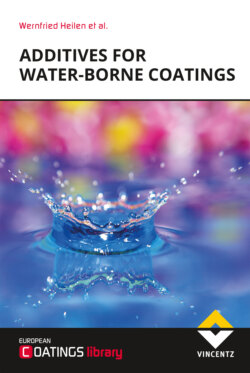Читать книгу Additives for Waterborne Coatings - et al. - Страница 9
На сайте Литреса книга снята с продажи.
2.1.2Grinding
ОглавлениеDuring grinding the pigment agglomerates are broken down mechanically using a variety of equipment. The simplest device is the dissolver. Normal inorganic pigments such as titanium dioxide can be ground with good results using an appropriate blade. The dissolver can only be used for premixing when organic pigments, which are more difficult to disperse, must be ground. A bead mill is recommended for achieving the required fine grind.
Because wetting and dispersing additives accelerate the wetting of the newly created surface, they improve the grinding process and reduce the dispersing time. During grinding, additive molecules adsorb on the new surfaces. They minimise the interaction between the increasingly smaller pigment particles and maintain a constant viscosity. At the same time the pigment particles are stabilised against flocculation. Without stabilisation the primary pigment particles would re-agglomerate and release the energy which was introduced into the system during the grinding process. The work needed to increase a surface area is given by the following equation:
dW = γ • dA
where
| W: | work to change the interface |
| γ: | surface tension |
| A: | surface area |
Because the pigment grinding process increases the surface area, this equation can be used.
It shows that the energy required to increase the surface area during dispersion, dW, is proportional to the surface tension γ. The lower the surface tension, the higher is the change of surface area for a given amount of dispersing energy. Wetting and dispersing additives reduce the surface tension. In other words, to achieve a certain change of surface area using a wetting and dispersing additive, a smaller amount of work is necessary. Wetting and dispersing additives thus perform some of the most important functions during the grinding process. They shorten the grinding time by reducing the surface tension, they reduce the amount of work necessary for dispersion and they prevent re-agglomeration of the pigment particles during the grinding process [2].
